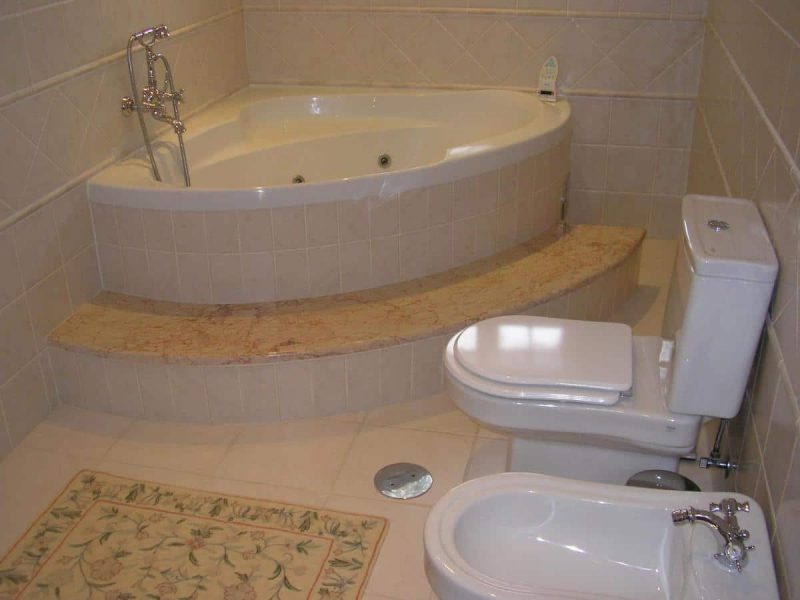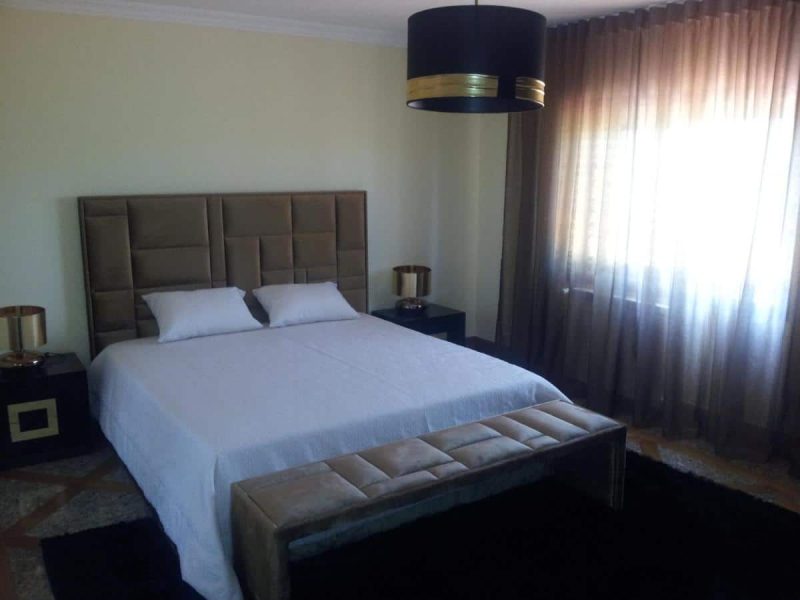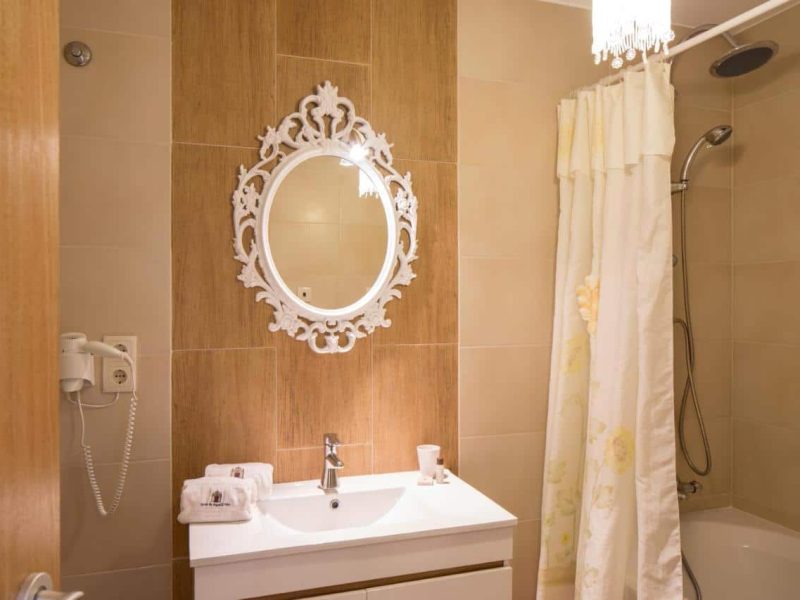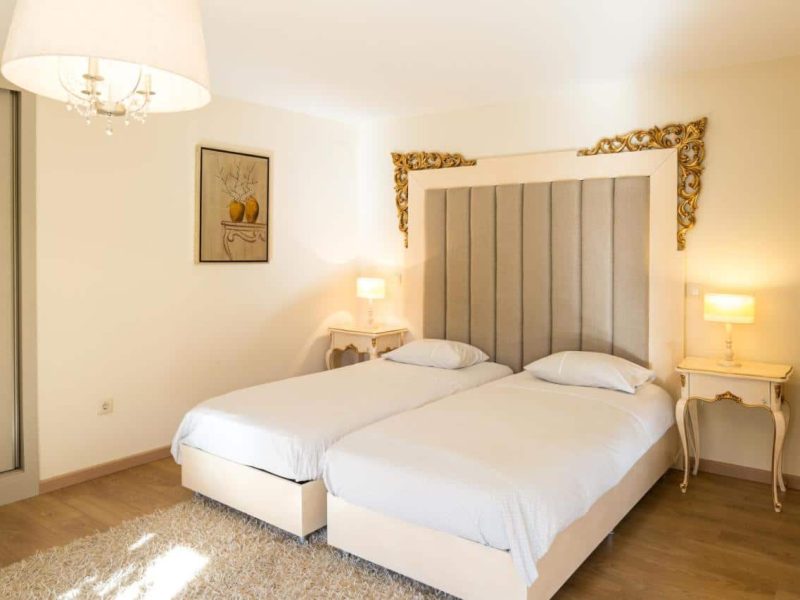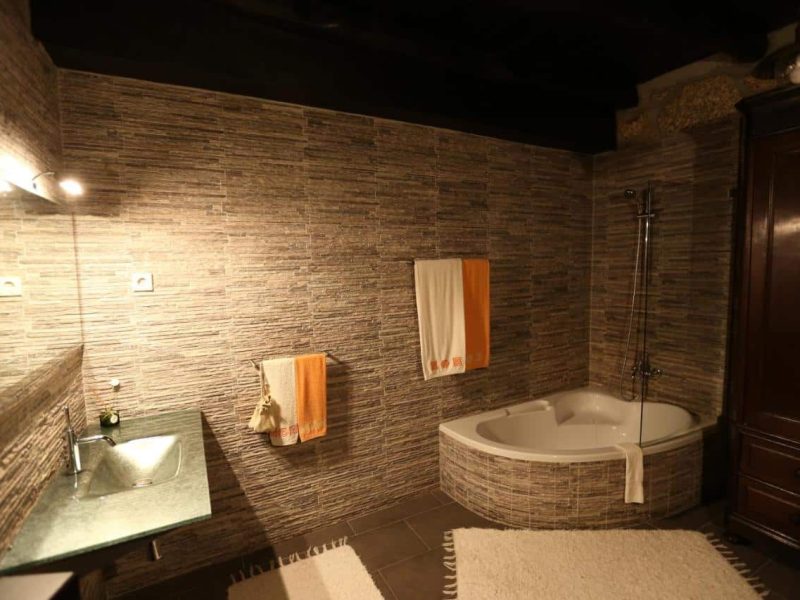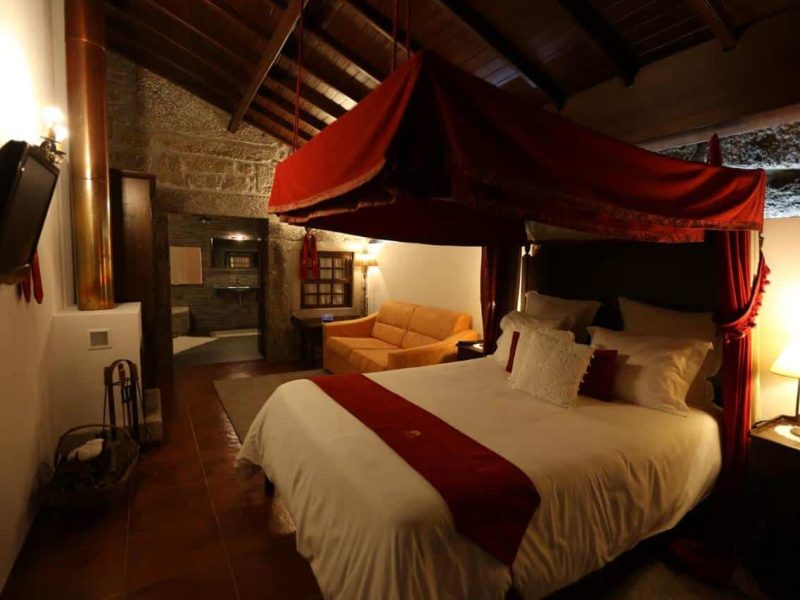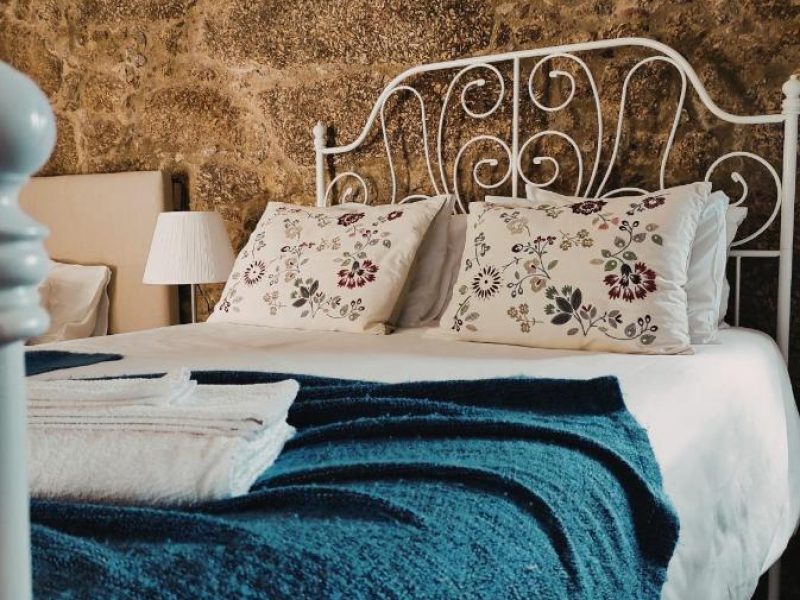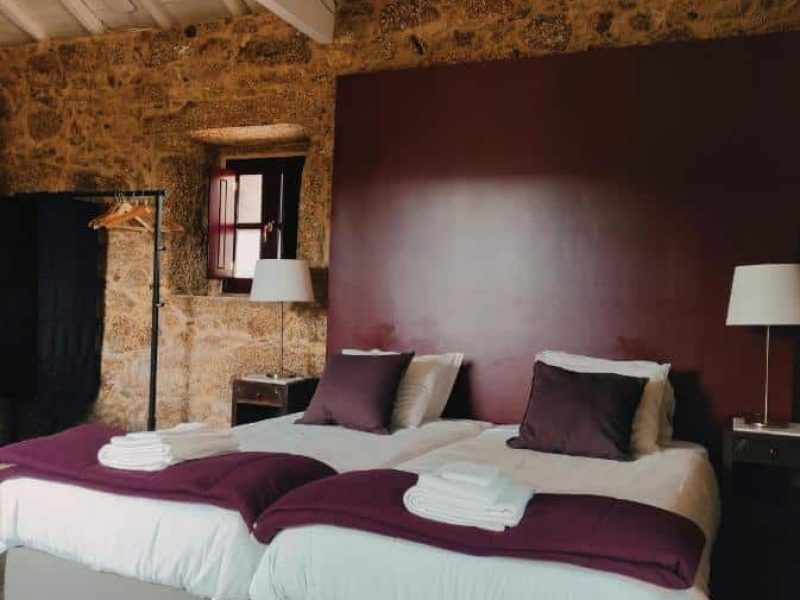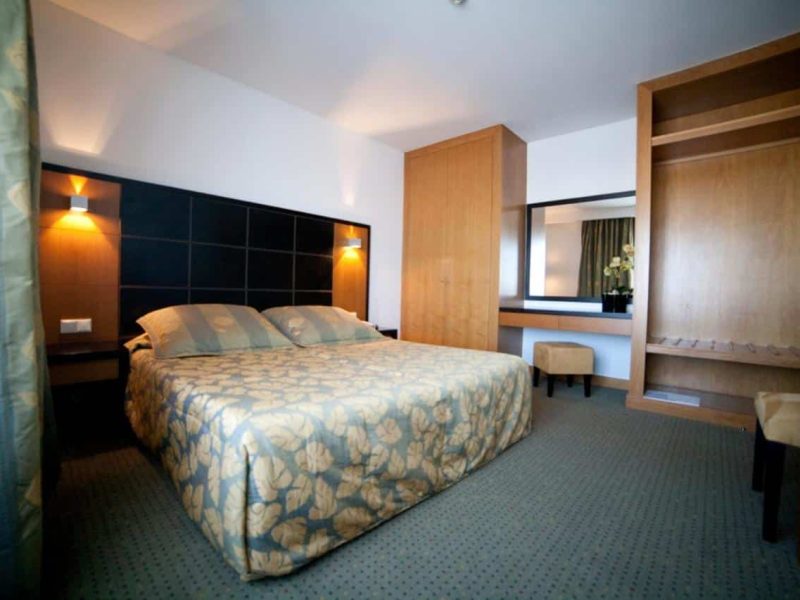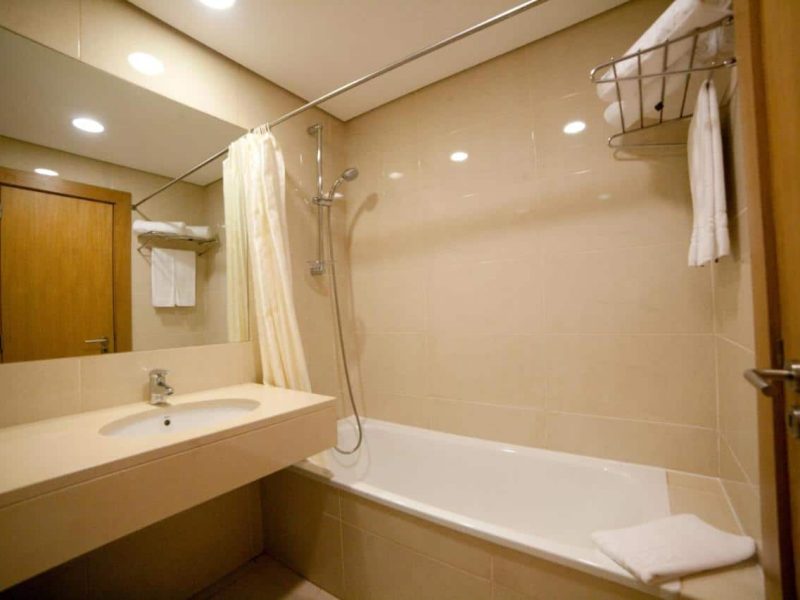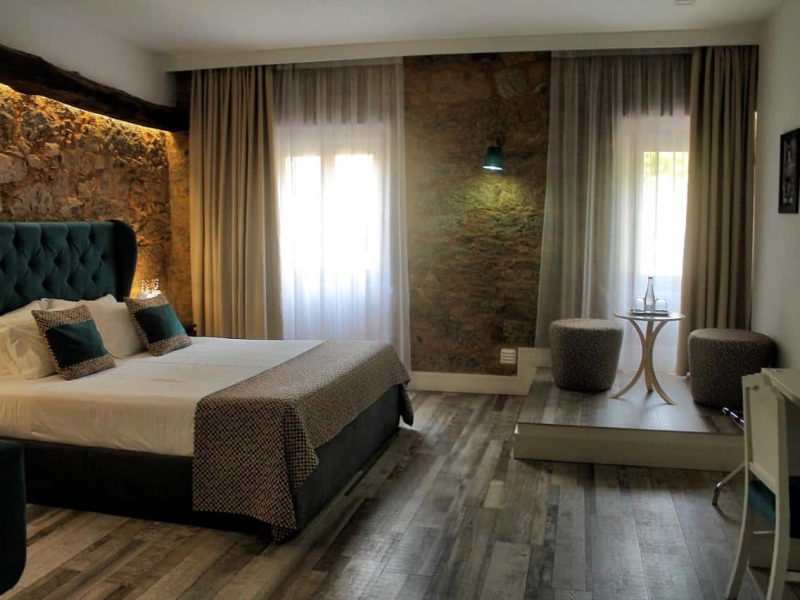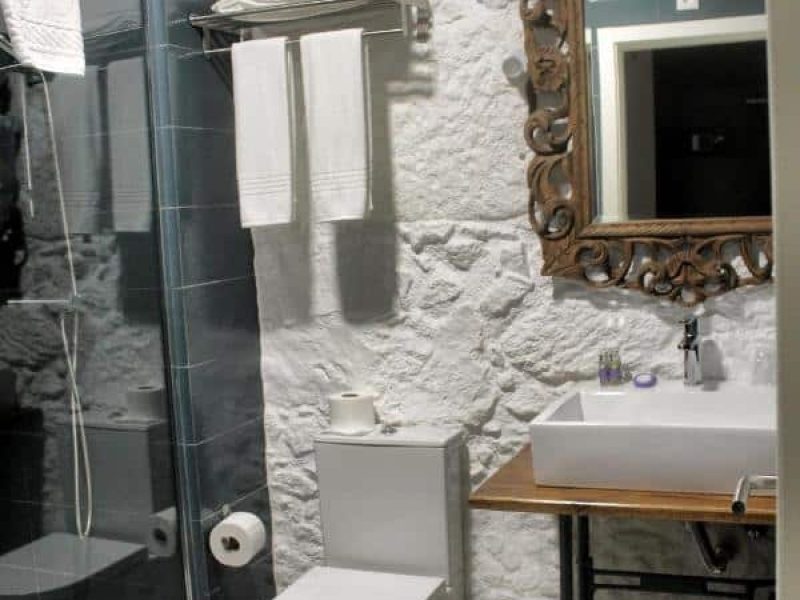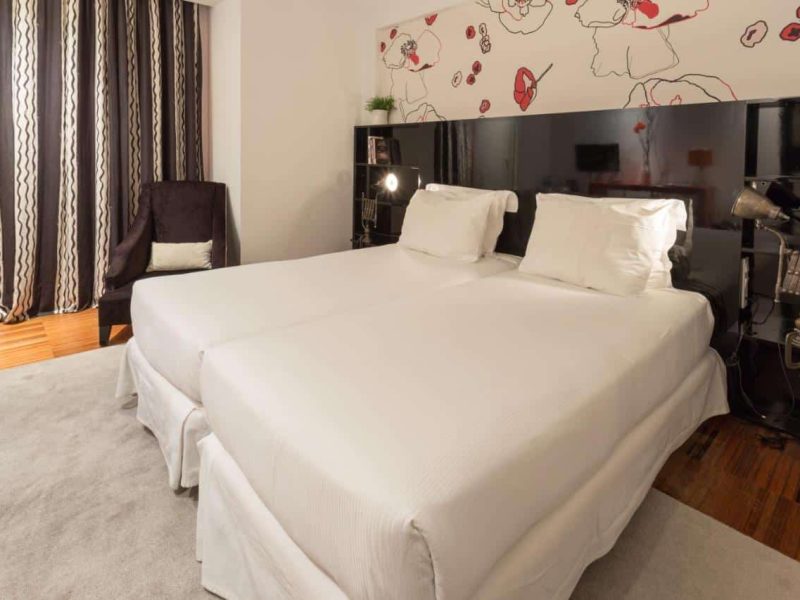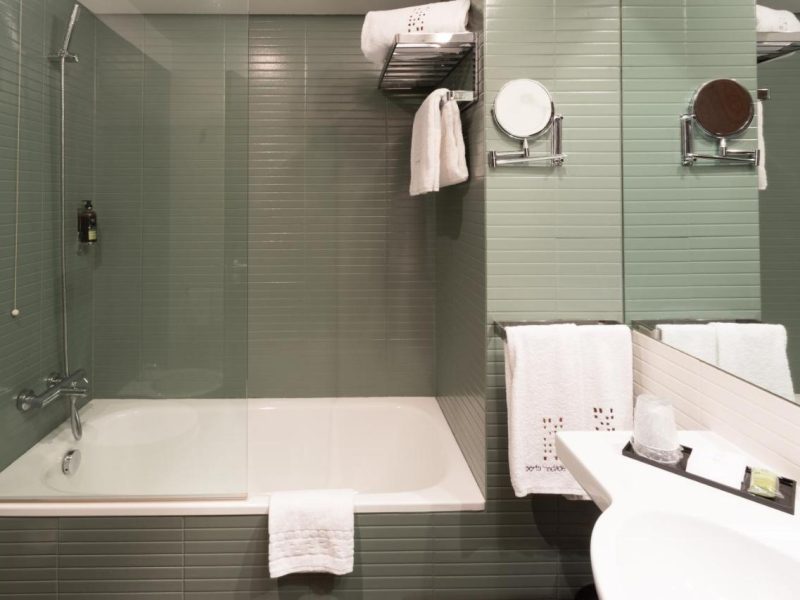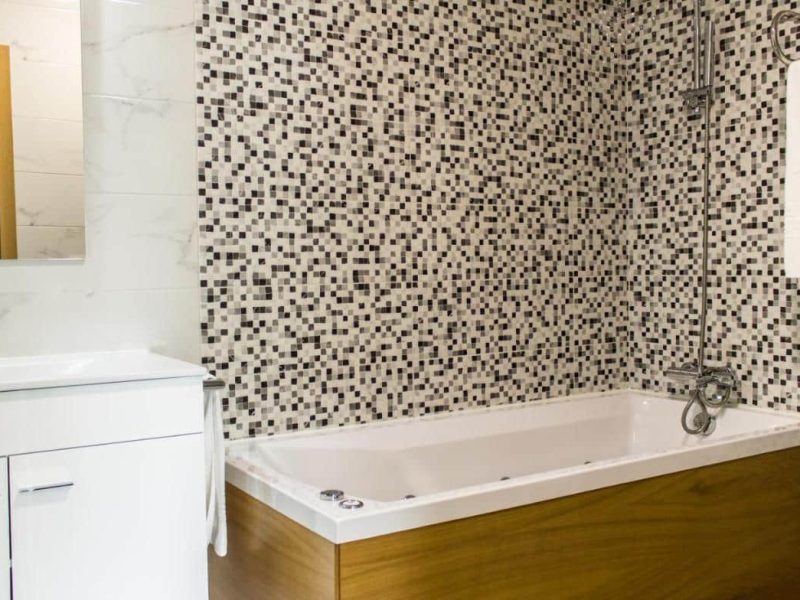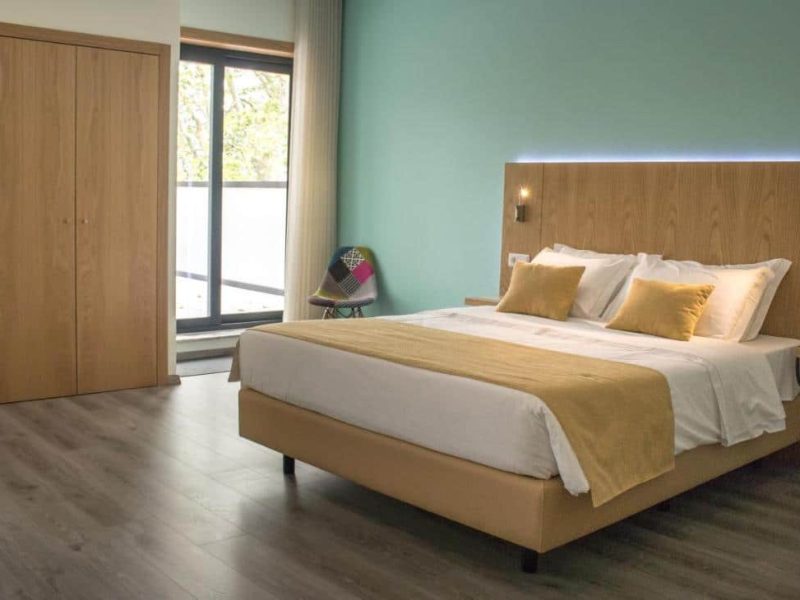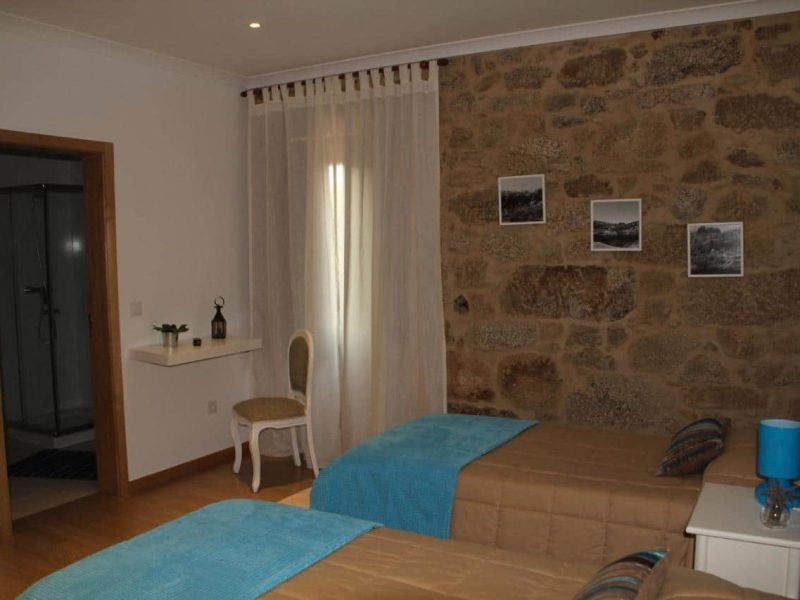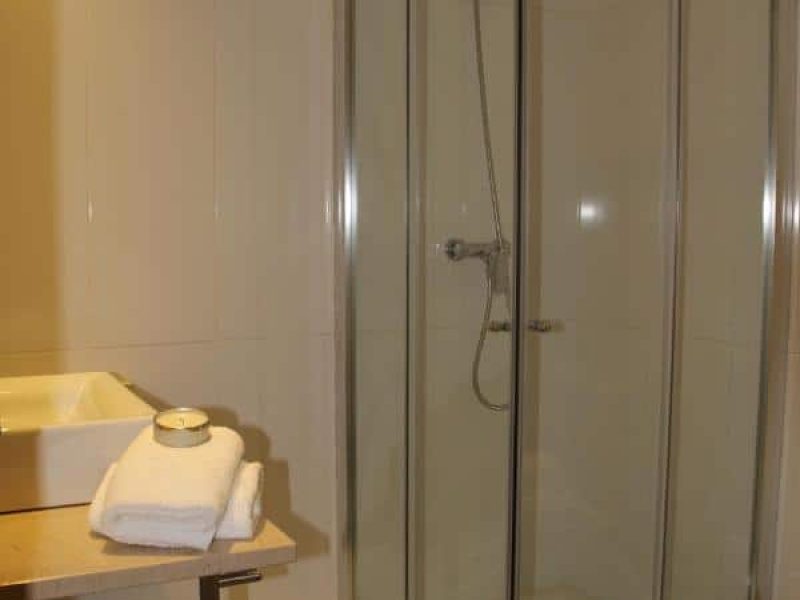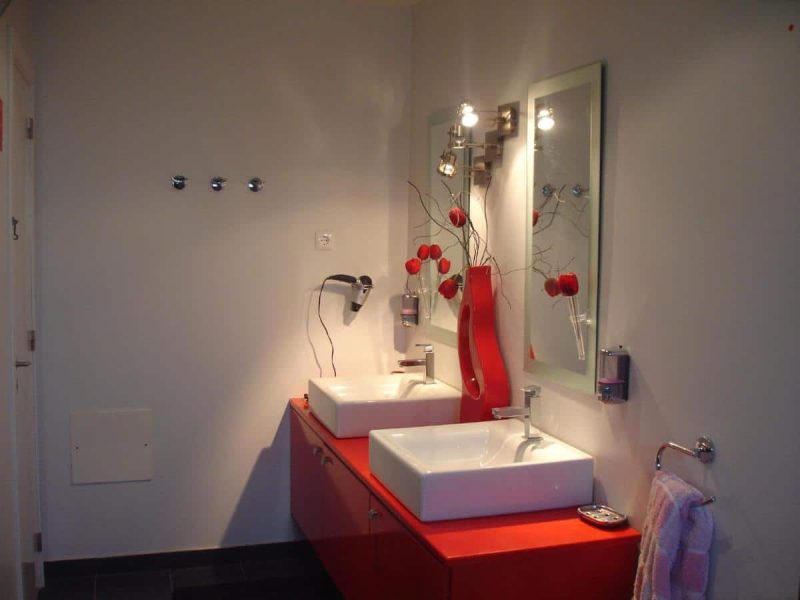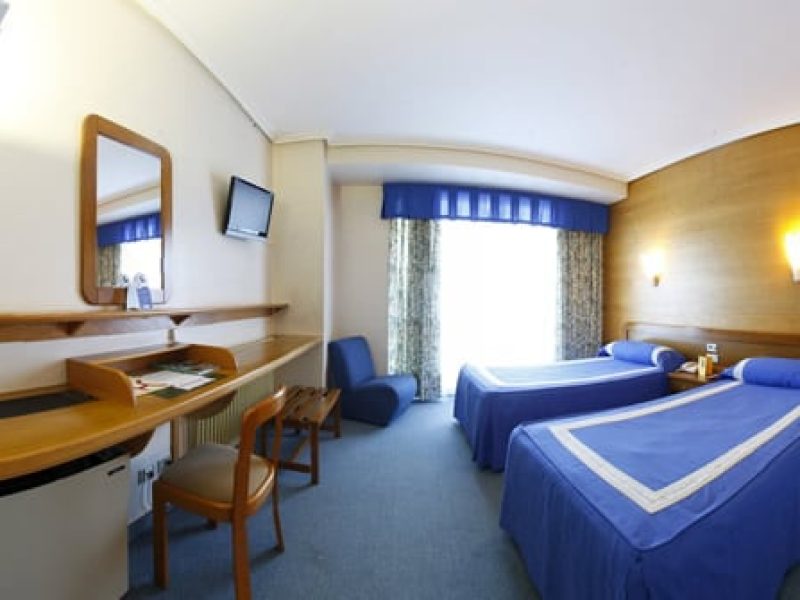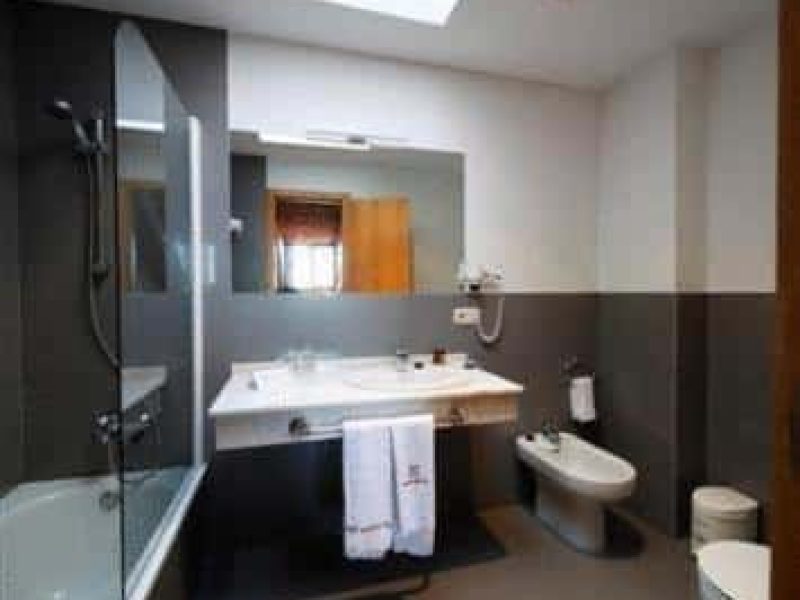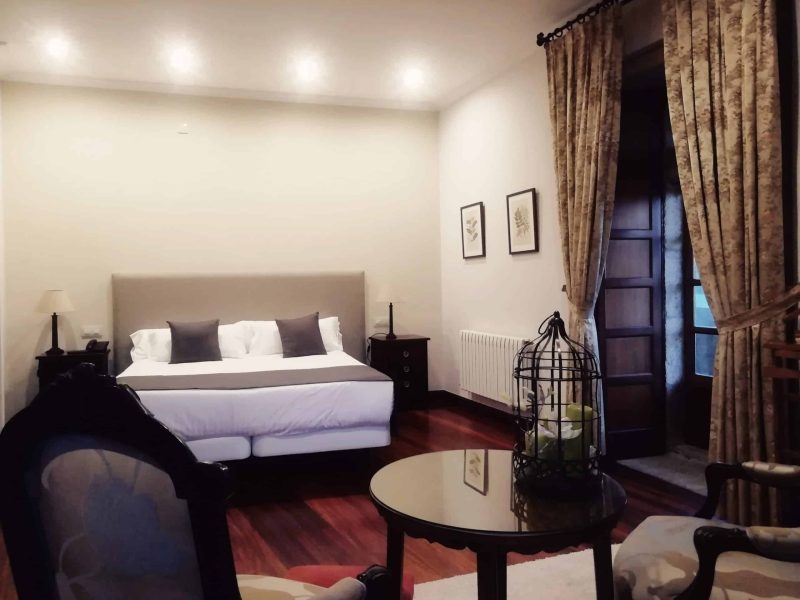Way of St. James from Oporto to Tui
Every great journey begins only with dreaming about it.
Discover the Way of St. James from Oporto to Tui
A unique journey
Way
The Camino de Santiago from Porto to Tui (Portuguese Way) adds the attraction of walking through the neighboring country, where the great hospitality of the people and the care of the establishments where we stay stand out. The route is perfectly signposted, just like in Spain.
Beautiful cities like Oporto, Barcelos with its famous “Rooster of the Miracle,” Ponte de Lima with its spectacular medieval bridge, and Valencia do Minho, bordering Spain at the foot of the Minho River and overlooking Tui, are some of the most important towns along the route.

More details
Origin
Oporto

Destination
Tui

Duration
8 days / 6 nights / 6 stages

Total Kms
107

Price / person
740€
Book now!
Indicates the number of persons

services
Services
Full and customizable services for a worry-free experience on the Wey of Santiago.
Services Included
Rooms with private bathroom.
Accommodation in Hotels, Rural Houses, Hostels
Travel assistance insurance in Europe
Special breakfast
Digital information dossier of the Camino
On-Route Telephone Assistance
Luggage transfer on the stages
✓ 1 suitcase per person, maximum 20Kgs
Special gifts, including the Pilgrim's Credential, the Pilgrim's Shell, and a Typical Galician Product.
No cancellation fees
✓ Up to 10 days before starting the Camino
IVA
Optional Services
Single room supplement
✓ Consult
Additional baggage
✓ Check rate if you have more than 1 suitcase per person
Cancellation Insurance
Remember that the cost of the optional services chosen will be added to the base price of your route. We are committed to making your pilgrimage an unforgettable and carefree experience. Welcome to the Wey!
Stages
Discover the Wey of Santiago towards the majestic Santiago de Compostela.
Day 1: Arrival in Porto. Lodging.
Welcome to the beginning of your journey. Get ready for an unforgettable adventure!
Day 2: Stage from Porto to Arcos (15.60 kms)
- Duration: 4h
- Difficulty: Low
Breakfast and start of the first stage of our Way of Saint James from Oporto.
From Porto we will travel by vehicle to Vilar do Pinheiro, due to the difficulty and danger of the exit from Porto, due to traffic.
Stage that takes place through asphalt and mainly cobbled areas, marked by small areas of cultivation and native trees.
We highlight the passage through the Zameiro Bridge, one of the most beautiful bridges on the route, until entering, also by another bridge, in Arcos.
Arrival in Arcos. End of the stage. Lodging.
Day 3: Stage from Arcos to Barcelos (19.5 kms)
- Duration: 5h
- Difficulty: Low
Breakfast and start of the stage.
Stage that runs through agricultural tracks, with cornfields and vineyards in its first Kilometers, in slight ascent, to then transit through asphalt tracks. And some cobled areas. After Pedra Furada, we start the descent to Barcelinhos and the beautiful Barcelos, where we enter through its medieval bridge.
Arrival in Barcelos. End of the stage. Lodging.
Day 4: Stage from Barcelos to Balugaes (17 kms)
- Duration: 4h 15m
- Difficulty: Low
Breakfast and start of the stage.
Stage that transits through asphalted areas mainly and with a strong climb to the Alto da Portela. Ponte das Taboas (12th century) is one of the most significant places on this stage of the Way of Saint James from Oporto, before reaching Balugaes.
Arrival in Baluages. End of the stage. Lodging.
Day 5: Stage from Balugaes to Ponte de Lima (16.6 Kms)
- Duration: 4h 15m
- Difficulty: Low
Breakfast and start of the stage.
From Balugaes, through rural landscapes and secondary roads, the Way will take us in its first part to Alto da Albergaria, with a steep ascent, to descend to the Lima River, which gives its name to the beautiful Ponte de Lima, one of the most beautiful cities in northern Portugal and the oldest on the Way of Saint James from Oporto, with a spectacular Roman bridge, its old town, and the Lima River as the city’s trademarks.
Arrival in Ponte de lima. End of the stage. Lodging.
Day 6: Stage from Ponte de Lima to Rubiaes (18.5 kms)
- Duration: 5h
- Difficulty: High
Breakfast and start of the stage.
The queen stage of the Portuguese Way from Porto, with a strong ascent from the beginning of it, to reach the Alto de Portela grande to, from here, descend to our destination, Rubiaes.
It runs mainly through dirt tracks and areas of dense vegetation, making this part of the Way exceptionally beautiful.
Arrival in Rubiaes. End of the stage. Lodging.
Day 7: Stage from Rubiaes to Tui (19.96 Kms)
- Duration: 5h
- Difficulty: Low
Breakfast and start of the stage.
Stage that it gives us with beautiful landscapes, in an orography of constant ups and downs, terrain that “insinuates” that we are at the gates of Galicia.
Much of the stage is done by the remains of an old Roman road, with numerous bridges.
Valenca do Minho, will be the prelude to our entry into Spain, through the Minho, to end in Tui.
Arrival at Tui. End of the Way of Saint James from Oporto. Lodging.
If you have more days, you can continue your Way of Saint James from Tui to Santiago de Compostela.
Day 8: Breakfast-End of our services
We’re coming to the last day of your trip! Enjoy breakfast and conclude this unforgettable experience with us.
Thank you for being part of this adventure!
This itinerary will take you through the most popular stages, allowing you to experience the beauty and culture of the Wey of Santiago. Be sure to book accommodation in advance, as it can get crowded, especially in the high season.
Safe travels and buen Wey!
Lodging
In our constant effort to provide the best experience to our customers, we want to assure you that we are committed to your rest and comfort. The accommodations we offer have been carefully selected and provide private rooms with private bathrooms, along with all the necessary services to make the most of your stay. It is important to note that we will never put you up in hostels.
Since these accommodations have a limited capacity, we will provide you with the exact name once you confirm your reservation and we verify availability on the dates of your choice. Your satisfaction is our priority!

Frequently Asked Questions
What to see on the Way of Saint James from Oporto
STAGE FROM OPORTO TO ARCOS
In Porto, we can admire the Cathedral of the Sé, built in the highest part of the city. The Tower of the Clerics, The Church of San Francisco and the Church of San Lorenzo dos Grilos.
In the lower part of the city, crossing the Louis I bridge, you reach Vila Nova de Gaia, where its famous wineries are located.
We can resort to your Bolhao market to enter into the essence of Oporto, as well as the Plaza de la Libertad, the most important of Oporto, in which center is the statue of Rey Pedro IV.
In Arcos, its Church, San Miguel de Arcos, stands out.
STAGES FROM ARCOS TO BARCELOS AND BALUGAES
In Barcelos, its parish church stands out, famous because it is where the most representative symbol of Portugal is made, the rooster, which according to legend he sang while roasted.
Its entire old town stands out for its good state of conservation of notable buildings, temples, towers…
Its medieval bridge deserves special mention.
Ponte deas Tabuas (12th century)
Chapel of the Holy Spirit and Sao Sebastian and .the Chapel of Sao Bento de Balugaes.
STAGES FROM BALUGAES TO PONTE DE LIMA AND RUBIAES
Ponte de Lima is considered one of the oldest villages in Portugal.
This town, bathed by the Lima River, stands out for its rustic and medieval. architecture that we can contemplate in the numerous monuments, mansions, squares and gardens that compose it.
Its Roman Bridge of the 5th century, composed of 16 arches that.crosses the Lima River, is one of its attractions.
In Arcozelo, the Church of Santa Marinha stands out.
In Rubiaes we can see the Romanesque temple of the thirteenth century. The Roman and medieval Do Piorado bridge with three semicircular arches.
STAGE FROM BLONDES TO TUI
In Tui, the International Bridge over the Miño River stands out, an obligatory passage for pilgrims.
The walled enclosure of the 17th and 18th centuries, the Cathedral of Santa María (mix of Romanesque and Gothic) as well as the Porta da Pía or Pescadería in the urban center.
How to get to Porto
We’ll provide you with the best options on how to get to your organized trip on the Way of St. James starting in the city of Porto:
Option 1: Private car
The best option is to leave your car parked in the Hotel’s assigned car park or in one of the many public car parks in the vicinity of the Hotel.
Option 2: Air
To reach Porto by plane (Sa Carneiro Airport), which is 12 kilometres from Porto, you have numerous airlines from Madrid and Barcelona and, to a lesser extent, from other cities:
– From Madrid: Iberia, Ryanair, Tap, Air Europa, and Vueling
– From Barcelona: Vueling and Ryanair
- From the airport you can take a taxi or public bus to Porto.
What to eat and typical dishes on the Portuguese Way from Porto
The route of the Portuguese Way begins in Portugal and within this country you must travel 5 stages that take you from Porto to Tui. During this route you will be able to learn about a wide range of typical dishes of Portuguese cuisine and the gastronomy of Porto.
These are the traditional dishes that you will find in the different stages of the route:
Bacalhaú
It is one of the most popular dishes in Portuguese gastronomy, and is prepared on the grill, in cakes and in a delicacy. However, golden cod is the most sought after by tourists.
Grilled sardines
This is another of Portugal’s traditional dishes, which you can enjoy from north to south. However, it is most in demand in summer, especially at the St. Anthony Festival in Lisbon.
A Francesinha
This food originates from the city of Oporto. This is a double-decker sandwich with sausages, grilled meat, topped with melted cheese and hot sauce. It is one of Portugal’s most famous traditional dishes.
Guts in port fashion
It is a stew made with pork offal, ham and other types of meat. They are also mixed with white beans and served with baked rice.
Sarrabulho potatoes
It is a traditional Portuguese dish where potatoes are cooked with pork blood, chicken, sausages, lemon and bread. You can enjoy them as a soup or with reds a moda do Minho.
Green broth
This dish comes from the north of the country. Includes cabbage, potatoes and onions. On occasions, pork meat or sausage is added. Its flavor is very mild, and it is served hot.
Arroz with sarrabulho
It is made with different types of meat and pig’s blood, giving it a very distinctive appearance. Additionally, it is served with fried pork cracklings.
Rissois
They are sandwiches filled with fish or shrimp in a crescent shape, made with béchamel sauce. Furthermore, they are accompanied by breaded and fried elements.
Alheira do Minho
It is a type of sausage made with chicken, beef, duck, or rabbit. Usually, it is served fried or grilled with rice, eggs, french fries, and vegetables.
Likewise, you cannot miss trying some desserts. Standouts include leite-creme queimado, almond fish, Pasteis de Nata or Pasteis de Belem, and Pasteis de Tentúgal. Moreover, you can pair your meals with red, white, and sweet wines.
Where to eat from Porto to Tui
One of the main reasons that has turned the Portuguese Way into a perfect alternative to eat is the wide gastronomy and restaurants that they offer to visitors. In most cases, the locals have a space with an incredible atmosphere to enjoy a meal with an unparalleled flavor and spend a pleasant time with friends on this unforgettable Way.
During the journey you will find a wide variety of restaurants, bars and places if you don’t know where to eat on the Portuguese way from Porto to Tui. You will be able to taste the best dishes of traditional cuisine.
Without further ado, get to know the best restaurants with tradition on the Portuguese Way. In this way, you will have an excellent opportunity to eat and connect with typical spaces and with the best gastronomy.
Oporto
It is a coastal city in the north of Portugal that offers you a boat trip. In addition, there are the wine houses with tastings and visits to their wineries. It also has different bars, cafes and restaurants such as: Café Santiago, Bufete Fase and El Escondidinho, where you can taste the local gastronomy.
Vilariño
It is a town with historical and heritage interest. Therefore, it is important to consider reaching this stocked town, since it does not have abundant services. However, it stands out for the gastronomy with local products such as trout, lampreys and reds.
Barcelos
This city is located on a hill on the Cavado River. Here you will find the oldest and largest outdoor market, where they sell local food and ceramics. You can also visit the Pedra Furada Restaurant and Cantinho do Peregrino, which are ideal for tasting cod, chicken or meat.
Ponte do Lima
It is a very old town in Portugal and its Way crosses the Lima Bridge. On this route you will find villages with orchards and baroque chapels. In addition, the Solar da Picota food establishments offer you Portuguese and Spanish Mediterranean food.
Rubiaes
It is a picturesque town of great value and unparalleled natural landscapes of the Portuguese Way. It also has restaurants such as Solar do Bacalhau, with an exquisite grilled Bacalhau. The Pousada de Valença also offers you delicious Portuguese food at excellent prices.
Tui
In the historic center of Tui you can taste the best traditional gastronomy in Ideas peregrinas. This is a hostel with a cafeteria and restaurant, ideally located after arriving from the Portuguese Way.
Why do the Camino from Porto?
The Portuguese route is the second Jacobean route with the greatest demand for pilgrims. This is a perfect alternative for its natural charms and attractive Portuguese rural baroque architecture. And gastronomy is precisely one of the most striking qualities of this tour.
It’s a different Way where you won’t find plateaus or marked slopes. In addition, this area guarantees all services for visitors. Of course, you will also be able to enjoy forests and millennial cruises.
This tour offers you chapels, churches and convents. Likewise, a wide variety of services and establishments, which will allow you to enjoy Portuguese and traditional cuisine.
In this way, if you have thought about doing the Portuguese Way, you should consider doing it in the summer months, since the weather is more favorable. Of course, the influx of pilgrims is greater than in winter.
You should also consider that there are two ways: One known as the Portuguese Way along the coast, and the other that enters Galicia through Tui, which is the most popular among walkers.
This Trail is highly requested by Brazilian pilgrims, since it binds them in language, and many relatives of when Brazil was a Portuguese colony, so many pilgrims have ancestors in Portugal and take advantage of the trip to visit the peoples of origin of their ancestors. Many of them when making this Portuguese Way, leave in the background and for future visits the most famous route of all such as the Camino de Santiago from Sarria.
Do you still have doubts about the Camino?
This video will give you a more detailed and visual look at what to expect on your adventure. Don’t miss it!

